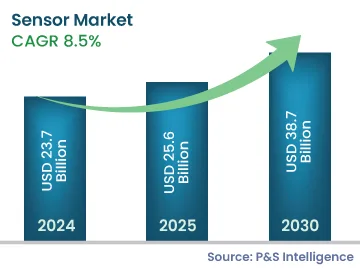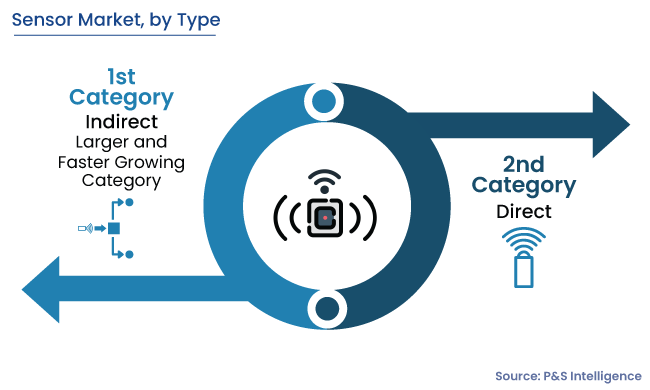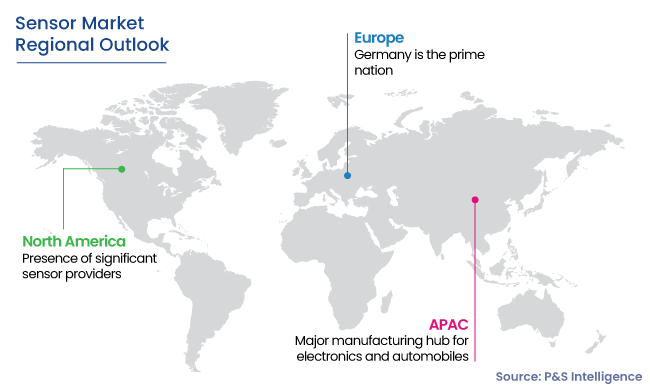Sensor Market Analysis
The sensor market generated revenue of USD 23.7 billion in 2024, which is expected to witness a CAGR of 8.5% during 2024–2030, to reach USD 38.7 billion by 2030. The biggest driver for the market is automation and advancement in technologies, as well as increasing utilization of IoT devices across industries. Sensor usage is not limited to one sector and is spread across various, such as healthcare, automotive, electronics, aerospace, IT & telecom, and industrial. The rise in the adoption of these multifaceted devices is due to their ability to collect real-time data, enable IoT connectivity, enhance safety and efficiency, support predictive maintenance, enable automation and control systems, and facilitate decision-making.
In addition, they are vital amidst the growing adoption of green energy technologies as they enable the real-time monitoring of renewable energy sources to optimize energy generation. Sensors play a vital role in smart grid management by offering crucial information on electricity demand and grid stability, which helps integrate renewable sources, as well as enabling dynamic supply–demand balancing. They also allow environmental monitoring for the implementation of impact mitigation strategies, assessing impacts, and monitoring performance parameters, to support energy storage systems. They make predictive maintenance possible, ensuring the reliability of equipment and extending its lifespan, which promotes the efficiency and sustainability of green energy solutions.
Furthermore, the increasing focus on security and surveillance systems in the residential, commercial, as well as public sectors is fueling the market growth. These systems integrate various types of sensors, such as motion sensors, cameras, biometric sensors, acoustic sensors, and environmental sensors, to detect intrusions and monitor activities. The adoption of IoT technologies in these systems has allowed connected sensors to collect real-time data transmission regarding security incidents. The data can further be processed by advanced analytics techniques, including machine learning (ML) and artificial intelligence (AI), to identify patterns and potential threats, thus strengthening overall security effectiveness.



